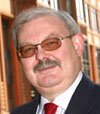We all know that happy staff = happy customers, but how do we get technology to make life better for the contact centre agent?
We asked a number of experts for their thoughts.
Show recent emails from a customer
Sometimes the simplest changes have the greatest impact. For example: one customer who was using multi-media and processing customer emails, asked that when we present the next email in the queue to the agent we also make visible any other emails in the queue from this customer.

Amanda Mone
This allows the agent to close multiple emails in a single interaction. They also asked that when we pop a call to the agent, again, we also show emails from that customer, allowing the agent to access and close any emails waiting in the queue at the same time they process the call.
These two simple changes have reduced the number of agents’ call centre activities dramatically and consequently improved customer service.
So, it’s not always about complete technology replacement, but understanding the business issues and using technology appropriately.
Amanda Mone, mplsystems (www.mplsystems.co.uk)
Large computer screens
Dual 20inch monitors have helped our staff, giving them wider visibility of desktop tools to assist in their calls.
Wireless headsets give the freedom to move around

Luke Clarke
Simple things can make a big difference. Some telephony kit such as wireless headsets give staff the freedom to move and interact with other members of the team and other departments, which helps remove that sense of being chained to the desk.
Games console for breaks
Providing items like the Wii or X-Box 360 for staff to use during breaks/lunches helps motivation and beating lunch time boredom. It is also very good for incentives.
Luke Clarke, Client Services Manager, Novia Investment Services
Swapping shifts
Any technology which gives some control back to your customer service staff has got to be a good thing.

Tracy McAvoy
For example, some of the features within workforce management solutions provide agents with visibility of their shifts over a period of weeks, but more importantly it gives them the ability to then swap those shifts with similarly skilled colleagues.
So those staff with family, sporting or even last-minute social commitments, can take responsibility for swapping their own shifts, subject to management approving the swap request.
In the USA, the more common practice of shift bidding also occurs, so an agent can bid for the shifts they would prefer to do, whether that’s early, late or weekend shifts. This is generally perceived as a much fairer way of allocating shifts with everybody having visibility of what is available.
Tracy McAvoy, Marketing Manager, Business Systems (UK) Ltd
One desktop screen with the right information

Ken Reid
Contact centre agents perform more efficiently and confidently if they have clear information to hand to manage calls, but they are often hampered by cluttered desktop screens and a lack of information. Technology can improve life greatly for both the agent and the customer here.
A myriad of different applications and systems (including spreadsheets and handwritten notes stuck to the computer screen!) are used by agents when helping customers.
Products like rostrvm CallGuide integrate with multiple desktop applications and enable agents to view all the information they need via one screen. It can automatically generate context-sensitive scripts, using telephony and business data, to guide agents through the call with the right information at the right stage in the customer dialogue.
Agents only need enter customer data once.
Ken Reid, Rostrvm Solutions (Rostrvm Solutions)

Richard Farrell
WFM can ensure agents are not over-extended
We are all familiar with the saying ‘happy staff = happy customers’ but I would turn this round and say it’s just as relevant to say ‘happy customers = happy staff’, which is where technology plays a key part.
It is well documented that the implementation of a workforce management system ensuring that agents aren’t over-extended or under-utilised has improved agent retention and performance.
Richard Farrell, Netcall (www.netcall.co.uk)
Noise-reducing headsets can create the sensation of a private call

Andrew Doyle
Headsets can provide simple benefits such as noise reduction, which can speed the resolution of the call and meet another critical need of the consumer – the sensation of a private call.
Headsets also increase agent productivity, as reinforced in the Jabra Productivity Study (2008), which showed that 8 out of 10 agents were more productive using a headset.
Andrew Doyle, Managing Director, Jabra Business Solutions, UK & Ireland (www.jabra.com)
Pre-defined business processes
Interaction analytics is now a familiar tool for many contact centres, and the next step is to use this technology to deliver real-time decisioning to the agent’s desktop, prompting them with clear guidance and next-best-actions in line with pre-defined business processes, at the key decisive moments during an interaction (whether this is telephone, email, or an online chat session). In doing so, the agent is able to improve the outcome of many interactions.

Craig Pumfrey
Using real-time decisioning makes it possible to automate many routine processes that an agent would otherwise be expected to complete, thus enabling them to focus on the interaction at hand, as well as speed up the interaction and improve KPI adherence.
Craig Pumfrey, Director of Marketing & Communications at NICE Systems (www.nice.com)
Call recordings can highlight best practice
Effective use of call recording technology in the contact centre can provide a library of real-world examples of both exemplary and substandard call handling performance, enabling an agent to actually hear the difference and know what to aspire to.
Hearing how actual calls are handled provides a level of insight that can be difficult to achieve solely through the use of handbooks and written scripts.
Kevin Burns, Managing Director, Oaisys
Provide agents with an individual technology “mentor”
The concept of business mentoring is rapidly becoming established as an invaluable aid in the development of business and business management techniques.
Working on the principle of “it is far easier, cheaper and quicker to learn from other people’s mistakes than go through the pain of learning from your own”, mentoring provides an invaluable tool by providing one-to-one “coaching” from a specialist in your field who has been there and done it.

Graham Chick
Having recently joined a Mentoring programme myself, I know this system works and works brilliantly… with this technique being invaluable within the contact centre.
Live, on-the-call analytics can remind agents what they need to say, or pick out what they have forgotten to say, or got wrong, or that they were speaking too loudly or too softly, too fast or too slow.
It also flags when they should stop interrupting the caller, or if they need to allow the customer to speak more.
Graham Chick, GemaTech
What technology do you have in your contact centre that makes life easier for the contact centre agent? Please leave your comments below. [No advertising, please]
Author: Jo Robinson
Published On: 19th Sep 2012 - Last modified: 17th Dec 2024
Read more about - Technology, Business Systems, Craig Pumfrey, GemaTech, IFS, Jabra, Ken Reid, Motivation, NICE, Rostrvm, Workforce Management (WFM)






































Man City Football Club recently spoke out about how the use of address auto fill technology in their call centres has helped them to cut costs and improve efficiency of their staff. If it’s good enough for them it’s good enough for me. (I hope this post won’t start a football debate now!)